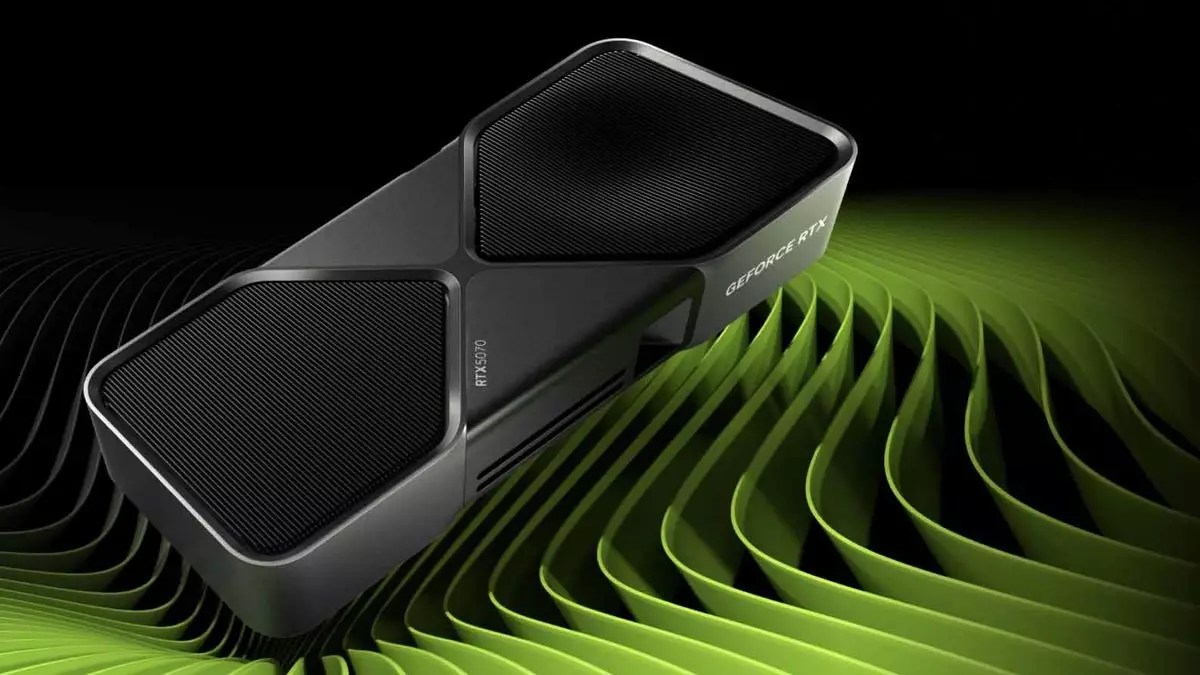In the realm of graphics processing units (GPUs), Nvidia has become synonymous with cutting-edge technology and performance, and the recent unveiling of the GeForce RTX 5070 at CES 2025 has set the tech community abuzz. Positioned as the least powerful member of Nvidia’s newly launched 50-series, the RTX 5070 has, surprisingly, ignited significant interest and speculation. As anticipation builds for its official release in February, tech enthusiasts and journalists are eager to dissect Nvidia’s ambitious claims surrounding this GPU.
Nvidia’s CEO, Jen-Hsun Huang, made headlines with his assertion that the RTX 5070 would deliver performance on par with the RTX 4090, but at a more accessible price point of $549. To validate or refute this statement, tech media outlet PCGamesN conducted hands-on testing with the RTX 5070, providing critical insights that merit closer examination. Journalist Ben Hardwidge reported that during gameplay of Marvel Rivals, the RTX 5070 not only matched but surpassed the performance of the RTX 4090, which was previously regarded as Nvidia’s flagship GPU.
However, the data surrounding this performance leap comes with caveats. The RTX 5070 benefits significantly from new Tensor cores and the cutting-edge DLSS 4 technology, specifically designed for multi-frame generation. Nvidia’s strategy has increasingly leaned toward integrating artificial intelligence into their graphical processing, as highlighted in Huang’s earlier remarks about the diminishing role of traditional raster graphics rendering. This technological shift raises questions about the extent to which the RTX 5070 will perform with standard rendering techniques versus its reliance on AI-enhanced processes.
At the heart of the RTX 5070’s performance prowess lies DLSS 4 Multi Frame Generation. This innovation allows the GPU to generate up to three additional frames for every traditionally rendered frame—in essence, producing a smoother and more fluid gaming experience. During the CES 2025 demonstration, Nvidia showcased both the RTX 5070 and the RTX 4090 in a side-by-side comparison, running Marvel Rivals at a stunning 4K resolution. The results were striking: the RTX 5070 maintained an average frame rate of around 240 fps, significantly outpacing the RTX 4090’s 180 fps.
While these results are certainly impressive, it is crucial to note that several factors, including the unspecified CPU used in the comparison, could affect replicability across various systems and titles. Additionally, the RTX 4090 lacks compatibility with the more advanced DLSS 4 technology, which makes the comparison somewhat skewed in favor of the newer card. Critics may argue that this makes the comparison less valid, calling into question the overall significance of the performance disparity demonstrated during the tests.
Even with these promising benchmarks, there are indications that the RTX 5070 may not always maintain such a dramatic advantage. Reports suggest that when testing games outside of the well-optimized Marvel Rivals, the performance gap between the RTX 5070 and the RTX 4090 narrows considerably. This is an important consideration for prospective buyers who may be evaluating the true value of the RTX 5070 against its predecessor.
As Nvidia emphasizes that the results showcased at CES might represent an ‘outlier’ scenario, potential consumers are advised to temper their expectations. Performance metrics that once came with a hefty price tag of over $1,500 for the RTX 4090 could indeed be more accessible now, but without the advantage of advanced AI-driven features, the RTX 5070’s performance could vary significantly across different titles and gaming scenarios.
The hype surrounding the Nvidia GeForce RTX 5070 may rightly reflect a significant evolution in GPU technology, integrating AI capabilities to enhance gameplay performance. However, consumers should thoroughly explore both the capabilities and limitations of this new GPU before making a purchasing decision. Ultimately, the RTX 5070 could herald a new era of affordability in high-performance gaming, provided that buyers are willing to embrace the revolutionary technologies it employs. As the February release date approaches, further benchmarks and reviews will be essential in determining whether it lives up to the inflated expectations laid out at CES 2025.


Leave a Reply